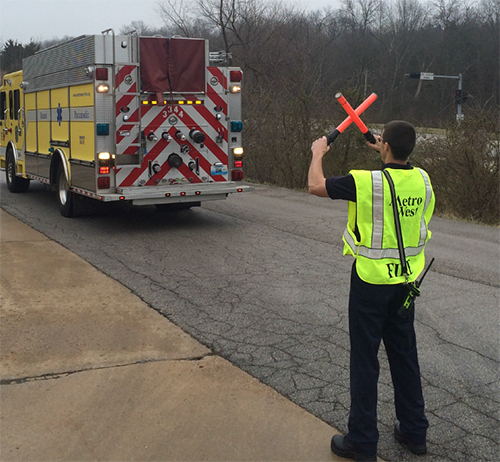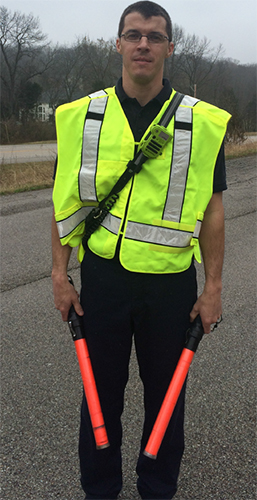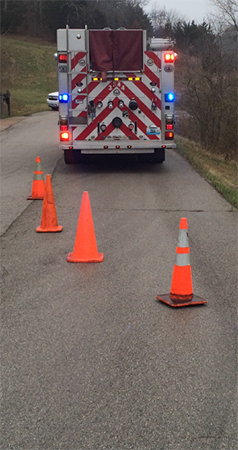

By Brian Zaitz
Roadways are a common operational location for the fire service. Whether it is at a vehicle accident on an interstate, an emergency medical services call in a commercial district, or a residential fire along a neighborhood road, we often find ourselves operating in or near roadways on almost every alarm.
We often take it for granted as being a normal operation, but annually, numerous firefighters are hurt and killed because of roadway accidents, many of which could have been prevented. It is imperative to never become complacent when operating on a roadway. Always take the necessary precautions to protect the scene, your crew, and yourself.
RELATED FIREFIGHTER TRAINING
Roadway Incident Operations and Safety: A 20-Year Review and a Plan for the Next 10 Years
Highway Incident Safety: The Hits Keep Coming!
“D” Drivers and Other Hazards at Highway Operations
Humpday Hangout: Blocking Engines…What Is Stopping You?
The first thing to consider is apparatus placement. We often review and drill on leaving room for the ladder in front of the building or placing the second truck on the C-side, but how often do you review apparatus placement to block a roadway for an accident or the use of cones for scene and traffic safety?
When possible, block the lane or lanes of the accident as well as one additional lane. This provides room for the crews to stage equipment such as rescue tools and stretchers as well as the workspace around the scene. While we are focused on the scene, we must also focus on the traffic. Although many feel this is a police matter (and, to a certain extent, it is), we must be able to function independently in their absence and assist when needed.


In addition, using cones provides early awareness and direction to traffic to merge lanes. When cones are not available or to augment the use of cones, stage staff vehicles “upstream”; this will also provide early awareness and slow traffic as it approaches the scene.
For your own personal safety, always be visible. Almost every firefighter uniform consists of dark pants and dark shirt; this is not the most visible thing on a roadway at 3 a.m. Make yourself visible by wearing your turnout coat with reflective striping, wearing a reflective vest, or using flashlights and other illumination devices.
Another key component is a radio. Although this does not provide any protection, it does provide a lifeline if something happens and can provide communications to others if traffic patterns change or if the scene needs to be evacuated because of impending danger from a vehicle. Always make sure you can be seen and heard.
Roadways are a dangerous location. With distracted drivers, the chances of injury or accident are increased for everyone working these scenes. Take the necessary precautions and preparations to ensure your safety and knowledge when working at these emergency situations.
Download this training bulletin as a PDF HERE (4.1 MB)
 Brian Zaitz is a 14-year student of the fire service, currently assigned as the captain/training officer with the Metro West (MO) Fire Protection District. Brian is an instructor with Engine House Training, LLC as well as instructor at the St. Louis County Fire Academy. Brian holds several degrees, including an associates in paramedic technology, a bachelors in fire science management, and a masters in human resource development. Brian is currently and accredited chief training officer and student of the National Fire Academy’s Executive Fire Officer Program.
Brian Zaitz is a 14-year student of the fire service, currently assigned as the captain/training officer with the Metro West (MO) Fire Protection District. Brian is an instructor with Engine House Training, LLC as well as instructor at the St. Louis County Fire Academy. Brian holds several degrees, including an associates in paramedic technology, a bachelors in fire science management, and a masters in human resource development. Brian is currently and accredited chief training officer and student of the National Fire Academy’s Executive Fire Officer Program.
MORE THROW BACK TO BASICS

